Face Station
With The Center for Autism Research
June 2009 to June 2010
What platform is it on? Can I play?
The Face Station games were Flash games that could be played in a browser. They aren’t online anymore, but you can watch some videos of their gameplay here.
What’s it for? Who’s it for?
The Face Station games were developed as part of an experimental therapy regimen for children with Autism Spectrum Disorders.
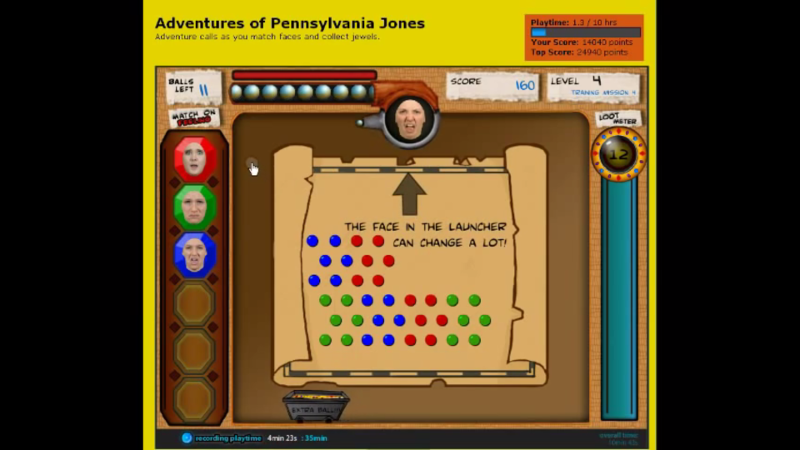 The Adventures of Pennsylvania Jones, a game in the Face Station suite
The Adventures of Pennsylvania Jones, a game in the Face Station suite
How do I play?
Each of the games featured widely different gameplay. For example, The Adventures of Pennsylvania Jones was very similar to Popcap’s Peggle, while Face Invaders was in the style of 2.5D beat-em-ups like Castle Crashers.
All of the games integrated a successful intervention therapy for young children that tried to address and prevent some of the social symptoms of ASD. The therapy required kids to identify pictures of people based on their faces, and to identify the emotions of people in other pictures. All of the Face Station games involved some form of matching mechanic that required the players to do those identifications.
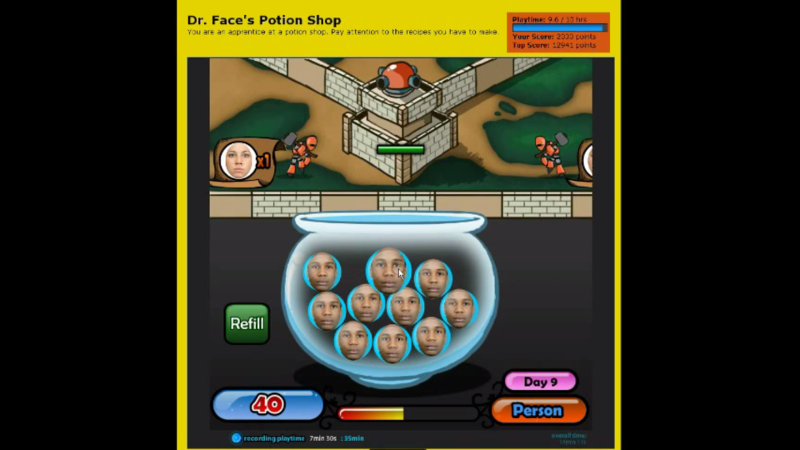 Dr Face, another game in the suite where players combine faces to create potions
Dr Face, another game in the suite where players combine faces to create potions
Who else worked on the game?
The Face Station project was conceived of by Dr. Robert Schultz of the Center for Autism Research. Our team consisted of 4 game developers and several child psychologists and imaging specialists. Each game was the result of significant collaboration, both amongst the game developers and with the scientific staff. In particular, the game developers consulted frequently with Dr. Susan Faja (an expert on our particular intervention therapy) and Dr. Gregor Kohls (an expert in reward systems) to ensure the games were providing the proper therapy.
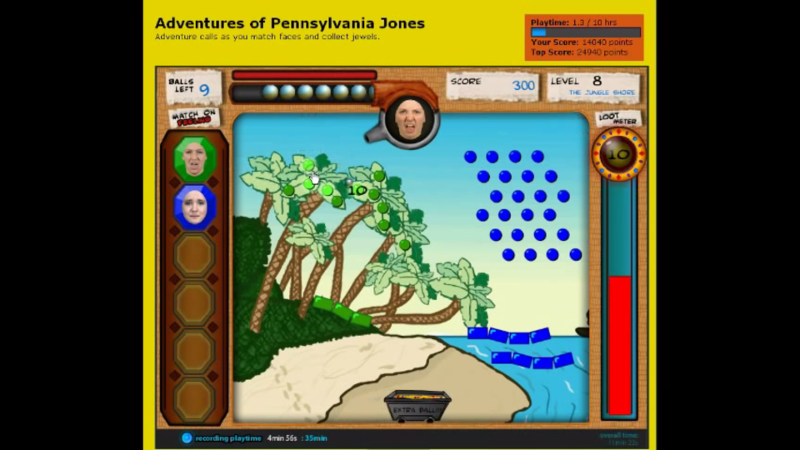 I was the primary designer and developer on The Adventures of Pennsylvania Jones
I was the primary designer and developer on The Adventures of Pennsylvania Jones
What did you do?
I was the designer, artist, programmer, and composer behind The Adventures of Pennsylvania Jones. Pennsylvania Jones was a Peggle-like game where players received points for knocking out the proper colored pegs. To determine the target color, the player had to match the emotion or identity of the face in the ball launcher with a set of faces linked to colors on the side of the screen. The goal of Pennsylvania Jones was to turn the therapy into a colorful, visually engrossing experience for one hour. The game had over 30 levels of varying complexity and challenge.
I also created design documents for several other games that could integrate the therapy, including a Zelda-like adventure game, a tower defense game, and a cooking game where players needed to create potions with ingredients labeled with faces. Several of the ideas in those documents were integrated into Dr. Face’s Potion Shop.
Finally, I composed music for Pennsylvania Jones, TrainZoom, and T-Rex Trample.
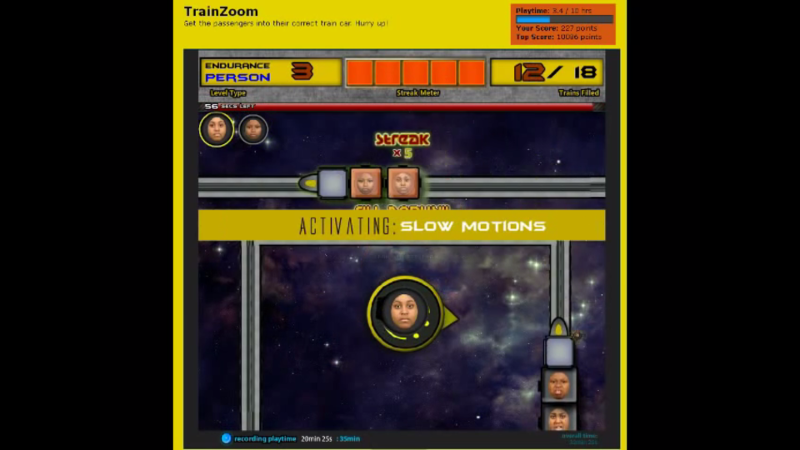 TrainZoom, one of several games that I composed music for
TrainZoom, one of several games that I composed music for
What happened to the games?
The Face Station games are all a part of a research study funded by the Robert Wood Johnson Foundation. The project is still ongoing. If you’d like more information about the research, you can find it on the Center for Autism Research’s website.
The project also produced a conference paper that was presented at the International Meeting for Autism Research in 2011. In it, the authors talk about the process behind the development of the games, and the rationale behind each one. The paper was called “FaceStation: Computer Games That Train Face Perception and Reward Circuitries In Autism”, and you can read its abstract on ResearchGate.
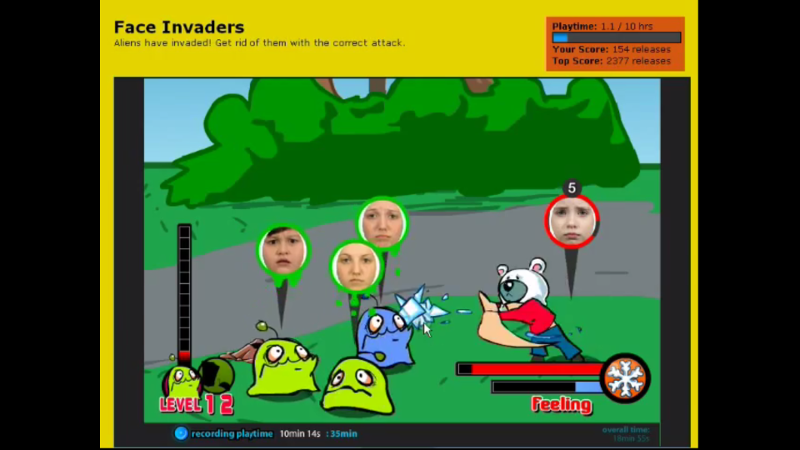 I assisted with the design of several other games in the suite, including Face Invaders, by Salim Zayat
I assisted with the design of several other games in the suite, including Face Invaders, by Salim Zayat
Let me know what you think of this article on twitter @tedw4rd or leave a comment below!